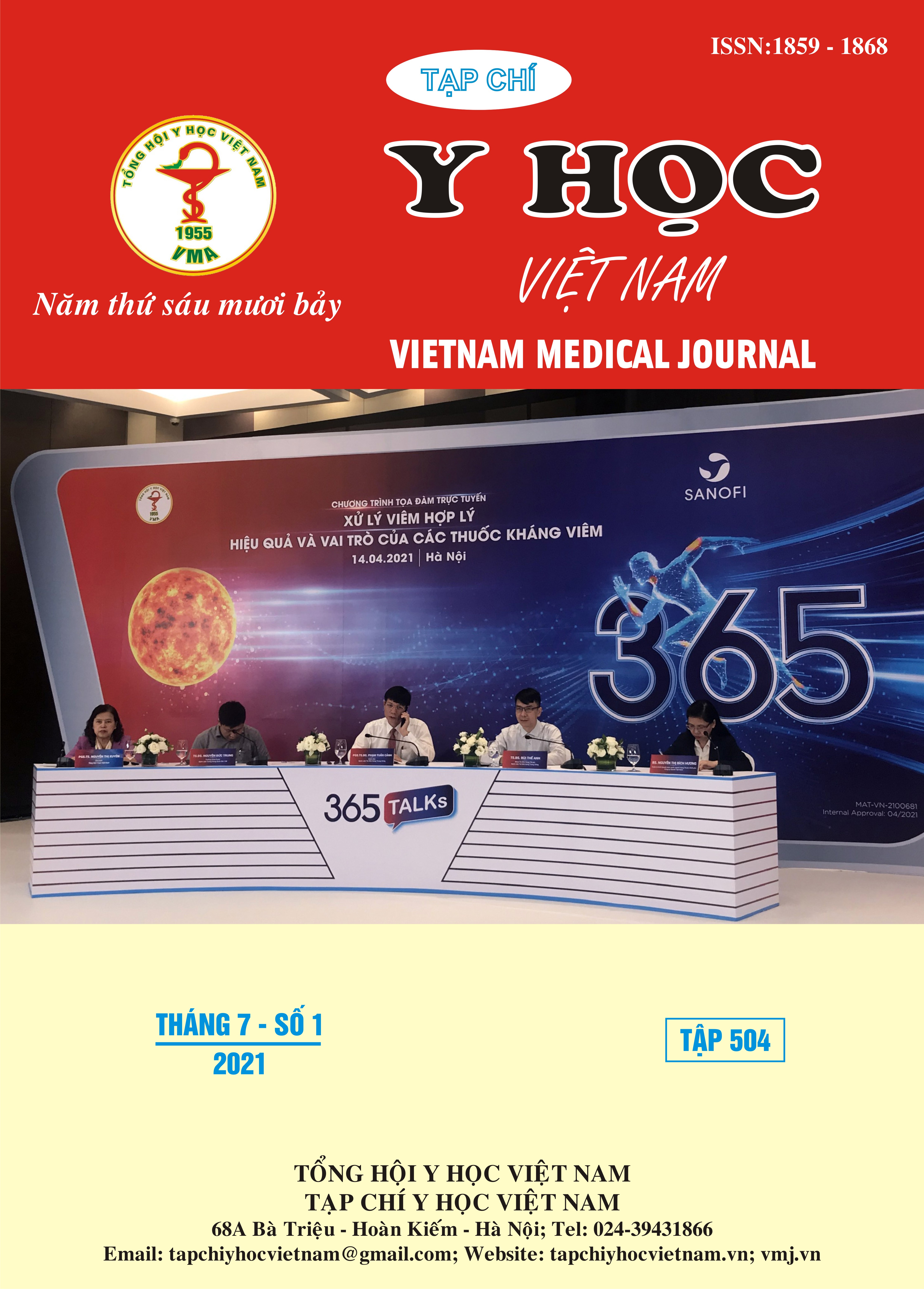ANATOMICAL CHARACTERISTICS OF SUBSCAPULARIS INSERTION IN VIETNAMESE ADULTS RELATED TO SURGERY
Main Article Content
Abstract
Background: Arthroscopic subscapularis tendon repair surgery is very important in restoring anatomy and achieving good function of the shoulder joint. There are many empirical studies showing the effectiveness of single-row suture using modified Mason-Allen technique. Currently, there are not many studies of the anatomy of the subscapularis tendon insertion to the lesser tuberosity. These studies have mainly focused on size and shape of the attachment site. They lack the identification of relationships between the features of the attachment site and between these features and important anatomical landmarks that can be applied in clinical practice to help the surgeon determine the exact location to place anchors. Materials and Methods: Descriptive study consisted of 20 shoulders of fresh cadavers with an average age of 63.2, not accompanied by rotator cuff lesions. These specimens were dissected and to reveal the subscapularis and their insertions in a consistent procedure. Anatomical features of subscapularis insertion were marked and scanned by a 3D scanner. Image data was extracted and analyzed by specialized 3D image processing software. Results: The subscapularis tendon attachment site to the lesser tuberosity expanded and attached mainly to the upper two-third and gradually narrows inferiorly. The superior part of the attachment site followed the boundary between the medial edge of the biceps and the lateral border of the lesser tuberosity. The inferior part of the attachment site still followed the lateral border of the lesser tuberosity and gradually moved medially. The distances from the most superior-medial point, superior-lateral point and inferior point to the articular cartilage edge were 4.66 ± 1.02mm, 18.53 ± 2.74mm, 16.74 ± 2.97mm, respectively. The distances from the most superior-lateral point to the most superior-medial point and inferior point were 14.92 ± 2.81mm and 24.71±2.47mm, respectively. Conclusion: Some anatomical features of the subscapularis insertion may help determine the locations of the anchors in subscapularis tendon repair surgery more accurately and nearly anatomically similar to the original insertion.
Article Details
Keywords
Anatomy, subscapularis tendon attachment site, lesser tuberosity, Vietnamese adults
References
2. Lo IK and Burkhart SS. (2003). The comma sign: an arthroscopic guide to the torn subscapularis tendon. . Arthroscopy, 19(3), 334-337.
3. Bancha Chernchujit and Pankaj N. Sharma. (2017). Arthroscopic Repair of Massive Subscapularis and Supraspinatus Tear by Double-Row Knotless Technique. Arthroscopy Techniques, 6(6), e2255-e2258.
4. Andrea Grasso, Giuseppe Milano, Matteo Salvatore, et al. (2009). Single-Row Versus Double-Row Arthroscopic Rotator Cuff Repair: A Prospective Randomized Clinical Study. Arthroscopy: The Journal of Arthroscopic and Related Surgery, 25(1), 4-12.
5. Gerhardt et al (2012). Arthroscopic Single-Row Modified Mason-Allen Repair Versus Double-Row Suture Bridge Reconstruction for Supraspinatus Tendon Tears. The American Journal of Sports Medicine, 40, No12, 2777-2785.
6. Stephan Pauly, Christian Gerhardt, Jianhai Chen, et al. (2010). Single versus double-row repair of the rotator cuff: does double-row repair with improved anatomical and biomechanical characteristics lead to better clinical outcome? Knee Surg Sports Traumatol Arthrosc, 18(12), 1718-1729.
7. Shane J Nho, Mark A Slabaugh, Shane T Seroyer, et al. (2009). Does the Literature Support Double-Row Suture Anchor Fixation for Arthroscopic Rotator Cuff Repair? A Systematic Review Comparing Double-Row and Single-Row Suture Anchor configuration. Arthroscopy: The Journal of Arthroscopic and Related Surgery, 25(11), 1319-1320.
8. C Benjamin MA, John D Macgillivray, Jonathan Clabeaux, et al. (2004). Biomechanical Evaluation of Arthroscopic Rotator Cuff Stitches. THE JOURNAL OF BONE & JOINT SURGERY, 86-A 1211-1216.
9. Markus Thomas Scheibel and Peter Habermeyer (2003). Arthroscopy: The Journal of Arthroscopic and Related Surgery. A Modified Mason-Allen Technique for Rotator Cuff Repair Using Suture Anchors, Vol 19, No3, 330-333.


